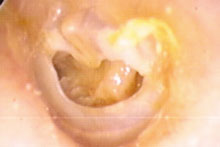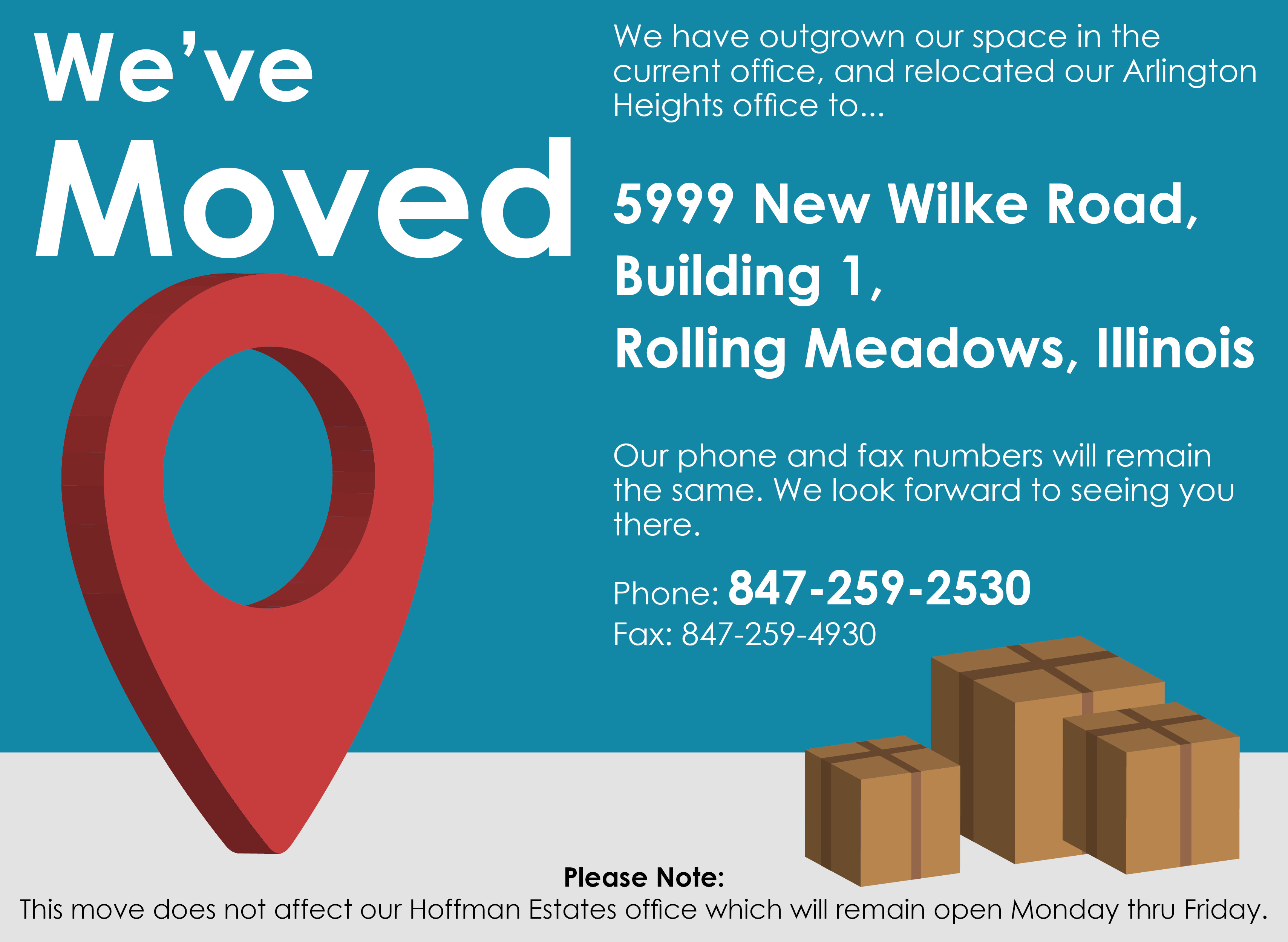Tympanoplasty / myringoplasty (Ear Drum patching)
The tympanic membrane (eardrum) is a very important structure that is involved with hearing. It is a thin membrane, about half the size of a dime, and it is located at the end of the ear canal. When sound waves enter the ear canal, the tympanic membrane vibrates. This transmits the sound energy through several tiny bones (ossicles) to the inner ear. This signal then travels from the inner ear to the brain, where it is perceived as sound.

Left eardrum with perforation
If there is a hole (perforation) in the tympanic membrane, the hearing mechanism is disrupted. While hearing will not be completely gone, there can be a substantial hearing loss associated with a tympanic membrane perforation. The degree of hearing loss depends on the size and location of the perforation on the eardrum, as well as whether or not the ossicles are injured.
The main causes of a tympanic membrane perforation are trauma and infection. Examples of ear trauma include being hit directly on the ear, jumping into a pool and having the water hit the ear, or experiencing rapid changes in air pressure such as with scuba diving or skydiving. Alternatively, a bad ear infection can cause a perforation, which may not spontaneously heal.
Most tympanic membrane perforations will heal spontaneously. However, if a perforation has persisted for several months, there is a good chance that it will remain. Many patients with tympanic membrane perforation are good candidates to have the perforation surgically closed. This is an operation called a tympanoplasty. Tympanoplasty may be performed alone, or in conjunction with other procedures such as ossiculoplasty or mastoidectomy. An ossiculoplasty is a procedure to reconstruct the disruption in the middle ear bones. Mastoidectomy surgery will be discussed elsewhere.
ABOUT THE SURGERY
The operation you are having is called tympanoplasty (with or without ossiculoplasty). The primary purpose of the tympanoplasty procedure is to repair the perforation (hole) in your tympanic membrane (eardrum). In ossiculoplasty, if there has been destruction or disruption of the middle ear bones that help transmit sound to your inner ear, these bones may be repaired with an artificial middle ear prosthesis. The surgery may be performed for several different reasons – one or more of these problems may pertain to you. Sometimes the eardrum hole is closed in order to prevent water from getting into the middle ear. Sometimes the surgery is done for hearing improvement, and sometimes it is done to attempt to reduce the frequency of draining ear infections.
What happens during the Tympanoplasty surgery?
Tympanoplasty is a microsurgical procedure that typically uses your own tissue to reconstruct the eardrum. The grafting material for the new eardrum may be taken from tissue behind your ear or from tissue towards the front of your ear. The surgery will either be performed directly through your ear canal, or through an incision behind the ear. This depends on your anatomy, as well as the size and location of the hole in the eardrum. On occasion, we may use a laser to carefully excise or remove scar tissue in the middle ear to improve the chances of successful repair.
What happens during the Ossiculoplasty surgery?
Also a microsurgical procedure, during an ossiculoplasty, we attempt to rebuild your middle ear bones during the surgery. This can sometime be performed simultaneously with the eardrum hole repair. On occasion, we would first attempt repair of the eardrum hole, and then at a later date return to surgery for reconstruction of the middle ear bones. The surgery is performed under general anesthesia and is most often performed on an outpatient basis. This means that you may go home the same day as the operation. In rare cases, however, you may stay overnight for various reasons.
The indications and risks of surgery must be understood prior to proceeding with your surgery. The alternative to surgery is no surgery at all, which would leave your ear in its current condition.
This type of ear surgery has very few serious risks. Usually, the tympanoplasty surgical procedure is performed without difficulty, with a high rate of success. Depending on your particular condition, ossiculoplasty has varying results.
SURGICAL RISKS AND POSSIBLE COMPLICATIONS:
Excessive bleeding during this surgery is rare.
Infection in the operated ear is also rare. If this was to occur, it could potentially cause failure of the eardrum repair.
The most common complication is failure of the graft to take hold, with a resultant persistent perforation of the eardrum. Tympanoplasty is a highly successful procedure with a rate of success approaching 90% in a non-infected, clean perforation. In children, the success rate is mostly related to the age of the patient at the time of the attempted repair. If failure was to occur, consideration might be given for a repeat attempt at the surgery at a later date.
As well, repair of the middle ear bones may not improve your hearing. Again, we might suggest a second attempt at a later date if this was to occur.
Hearing loss after tympanoplasty is rare. Often, hearing is actually improved. Extremely rarely, complete loss of hearing could occur in the operated ear. There is also a possibility of no change in your hearing with this surgery.
Dizziness can occasionally occur after the surgery. This would likely resolve over several days.
Ringing in the ear (tinnitus) can also occur after this surgery usually related to how your hearing changes after the surgery.
There is a small nerve that runs in the middle ear that controls a portion of your taste buds. If this nerve were injured, you would experience a metallic taste for several weeks to months. This would typically resolve.
There is a small chance that repair of the eardrum could induce a small skin cyst in the eardrum, ear canal or middle ear. This is called a cholesteatoma. If this were to occur, another surgical procedure would be necessary.
The nerve that controls your facial movement called the facial nerve also runs through the middle ear. Although extremely unlikely, injury to this nerve could occur, which would cause weakness or paralysis of the muscles of your face.
If the surgery was approached through an incision behind your ear, it is likely that you will feel numbness to your ear for several weeks. This typically resolves over time. You may also notice some protrusion of your ear after surgery. This typically settles down after a few weeks.
As with any type of surgery, the risks of anesthesia such as drug reaction, breathing difficulties and even death are possible. Please discuss these risks with your anesthesiologist.
GENERAL POSTOPERATIVE INSTRUCTIONS/CARE
- ACTIVITY: Light activity for one to two weeks is recommended after your ear surgery. Please avoid blowing of your nose for one month after surgery. This may dislodge the new graft.
- DIET:You can eat a diet as you tolerate after your ear surgery.
- MEDICINES: You will be prescribed pain medicines and possibly oral antibiotics and/or eardrops. Take these as directed.
- BATHING: Generally, you may shower 24 hours after the dressing is removed. We do request you keep the ear dry for 4-6 weeks after surgery or until instructed otherwise. During shower, you can fill the inside of the ear with a cotton ball lightly coated with Vaseline to keep water out and/or place a cup over your ear to keep water out of your ear as you shower.
- POSTOPERATIVE FOLLOW-UP:You will be asked to return to our office 1-3 days after surgery and/or 7-10 days after surgery. There will also be several visits over the next 4-6 weeks. If the first two post-operative visits have not already been scheduled, please call our office to make those appointments.
